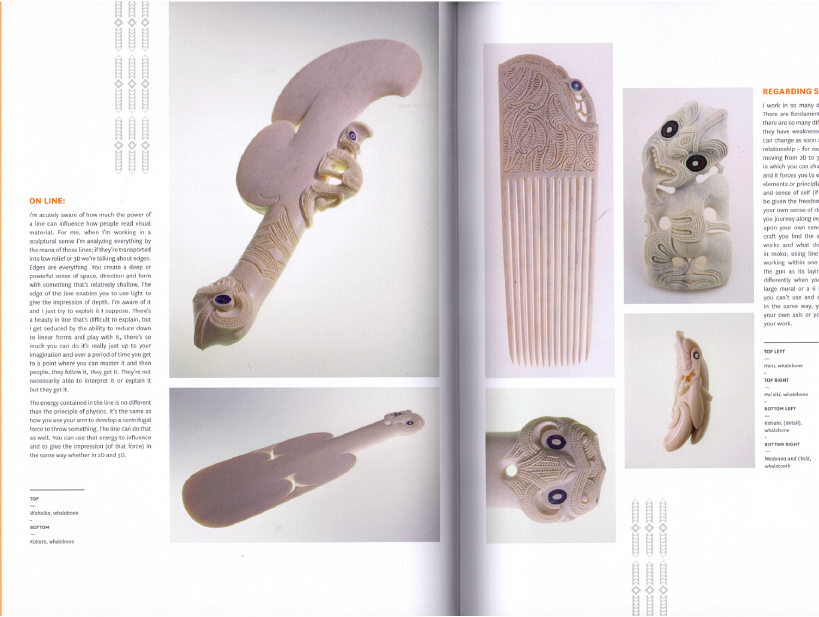More than a koru, part two: What role does Māoridom play in New Zealand’s design identity?

Design reflects our heritage and identity. So what role does Māoridom play in New Zealand’s design identity? Who is able to do it? What principles need to be abided by? And how does a young country like New Zealand embrace the modern world while retaining its traditions? In part two of a series, we float down the country’s cultural currents with Threaded design editor Kyra Clarke.
- Read part one here.
Stop, collaborate and listen
Relationships were an important point mentioned again and again as integral as much to Māori design as to tikanga and identity.
International bi-annual art and design publication, Threaded Magazine, profiles and showcases emerging design talent alongside established studios and designers, both in New Zealand and overseas.
Kyra Clarke, Threaded’s design director, says the team works with iwi and elders, as well as people close to them to ensure authenticity in their projects.
“I seek counsel a lot from [artist, designer and director] Desna Whaanga-Schollum and from [craftsman, sculptor and design educator] Carin Wilson and from Ngā Aho [the society/network of Māori design professionals]. If we had crazy ideas we’d run it by them or my cousin or mum who bring their knowledge and experience.”
Clarke says the latest edition of Threaded Magazine, Edition 20, was exclusively dedicated to Māori art, design and mahi toi [art/craft] discourse. Its theme was ‘New Beginnings’, centered around Matariki, and the notion of acknowledging past, present and future, featuring indigenous practitioners such as Janet Lilo, Lisa Reihana and Lonnie Hutchinson.

“We definitely had challenges with artists, translating the experience of their work or practice in to print – we had to set our own kawa (customs) for this project, communicating along the way with the artists so they trusted how it was being represented,” says Clarke.
She says the catalyst for Edition 20 was 16/2, a project Threaded was asked to do for Fedrigoni, an Italian paper merchant. With an open-ended brief, something says Clarke was quite daunting, the only pre-requisite was that it represented New Zealand in some way.
“Our country is so diverse it was like ‘what do we do?’ So, we tried to go back to the essence of who we were, where we came from. I’m part-Māori and we had people that were non-Māori in the studio at the time, but it was that collaboration and our journey together exploring that, to represent our culture in a way that other people may get a nice introduction that was guided.”
Clarke says for 16/2 the team talked to elders as there were lots of myths or stories that weren’t able to be found online, and she really wanted to have a connection to the land, to where she came from, and to objects that represented something important within their lives and the studio.
“For 16/2, taking traditional elements of Māori culture/identity, and making it contemporary we pushed that more in Edition 20. We were exploring that notion – line work, linear work, motifs – and we open with same karakia in 16/2 as we do in Edition 20. In Māori culture it’s the use of repetition that makes things strong.”
Clarke says a collaborative process occurs when working with Māori clients.
“We’ve rebranded a marae and two hapu and those are very different approaches because you’re talking to the kaumatua, talking to the people. They walk with their design and anyone can contest it – it’s to be challenged or be accepted, that’s the way it works.”
She says it can be tough working with clients who don’t understand cultural appropriation.

“I had [a corporate] client wanting a logo, wanting a koru, and I went back to them asking why they wanted that particularly design, if they knew the meaning behind it? They don’t necessarily care about the meaning – it’s just a re-appropriaton of a Māori design of which they liked the look of.”
Clarke adds she has had to let clients go who are not prepared to go through a proper branding exercise to determine a visual solution/outcome.




